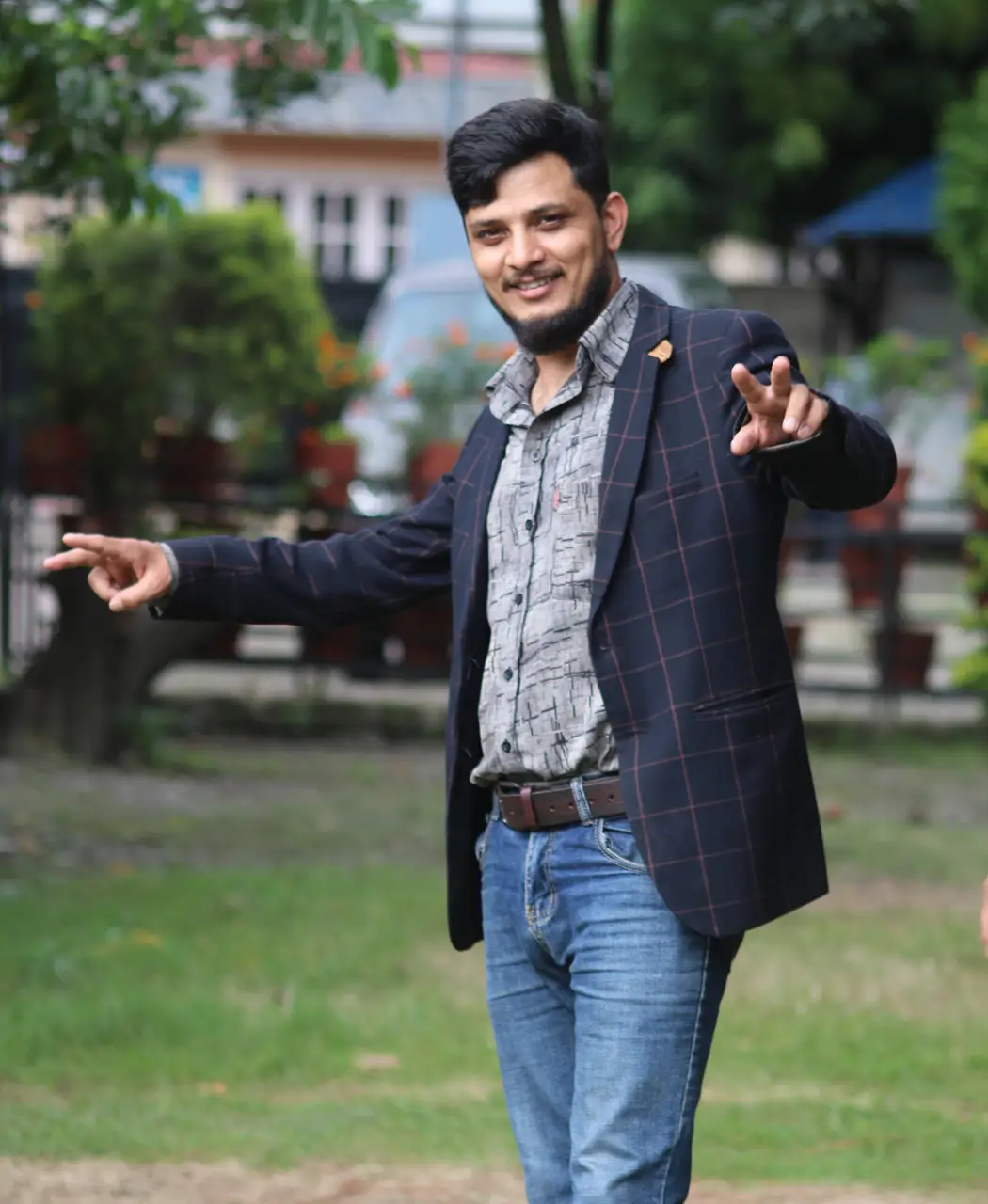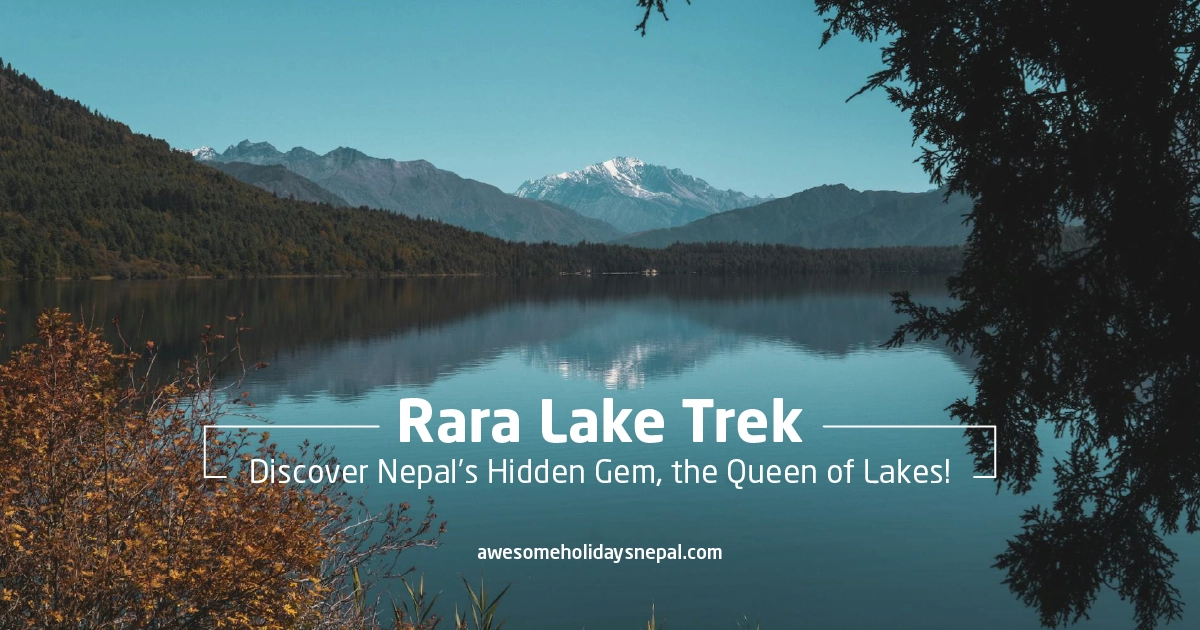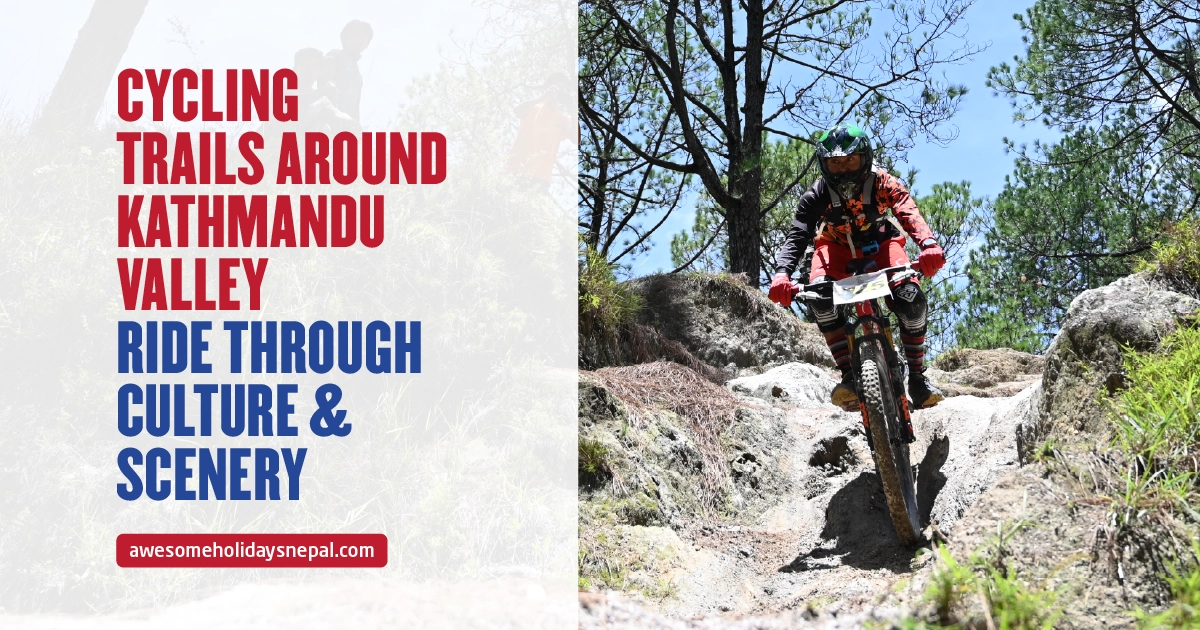Top 10 Must Visit Monasteries in Nepal
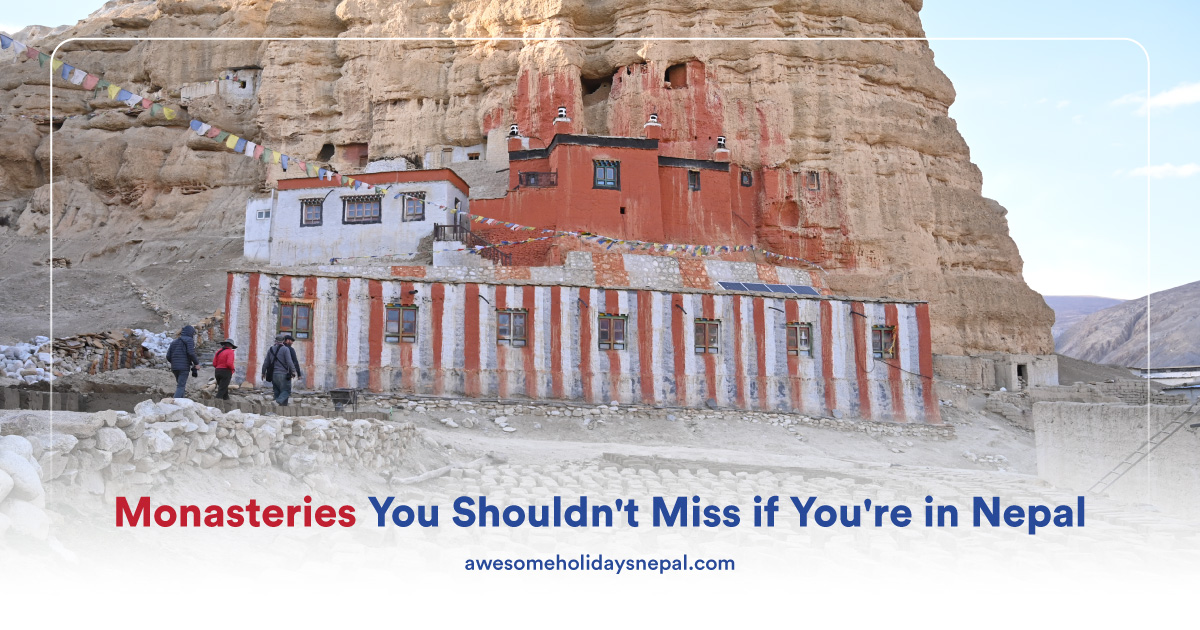
Monasteries in Nepal are more than just places built with statues of the lord for worship; they are living testaments to centuries-old traditions and spiritual devotion to Buddhist philosophy and rituals. These cultural heritages are gateways to spiritual enlightenment, cultural heritage, and breathtaking Himalayan landscapes.
The word monastery in Nepali is Gumba, which came from the word Gonpa which are also religious institutions where monks live, meditate, and engage in spiritual practices. Tucked away in serene valleys and perched on rugged cliffs, these sacred sanctuaries offer a rare glimpse into the monastic way of life, where chants echo through ancient halls and prayer flags flutter in the mountain breeze.
If you’re looking for a journey that blends adventure with spirituality, visiting the monasteries in Nepal should be on your bucket list. Here are the top 10 must-visit monasteries in Nepal.
Tengboche Monastery
Tengboche Monastery, also known as Dawa Choling Gompa, is the largest monastery in the Khumbu Region of Nepal. It serves as the spiritual and cultural heart of the Sherpa community and is the cornerstone of Sherpa culture and Buddhism in Nepal. This renowned Nyingmapa monastery is known for its deep-rooted connection with Guru Rinpoche.
The monastery is surrounded by lush forests of pine, azaleas, and colorful rhododendrons, adding to its serene and sacred ambiance. It is also located within the Sagarmatha National Park, a UNESCO World Heritage Site. The monastery sits at an altitude of 3,867 meters (12,687 ft) above sea level and offers breathtaking views of some of the world’s highest peaks, including Ama Dablam, Tawache, Everest, Nuptse, Lhotse, and Thamserku.
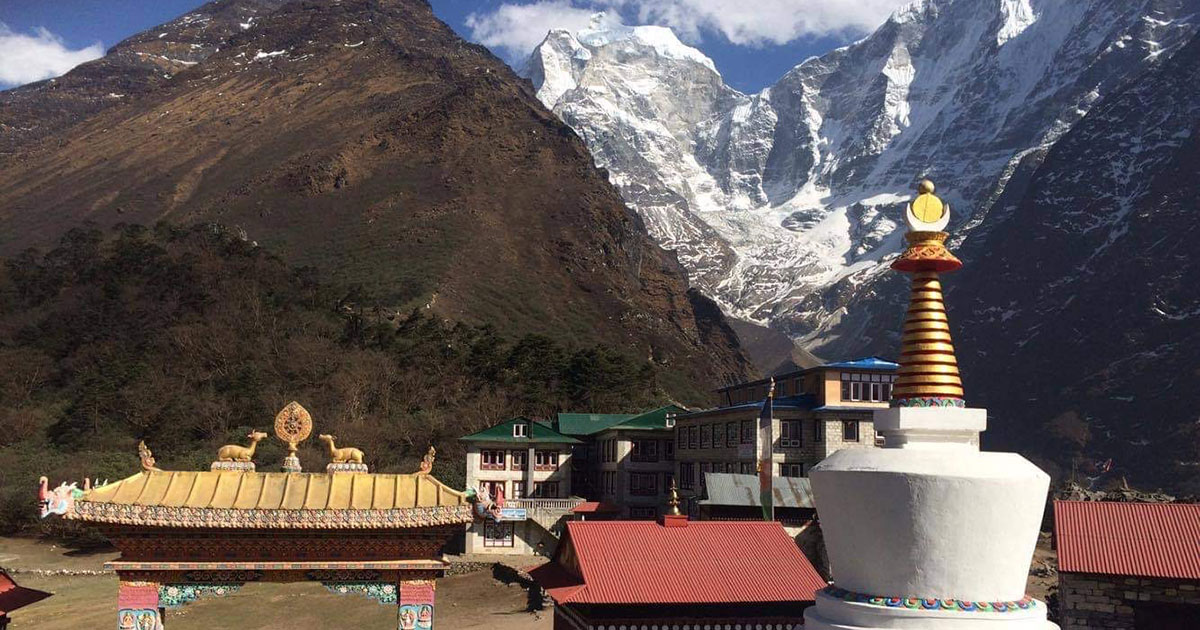
Built in 1916 by Lama Gulu, the monastery has faced multiple disasters throughout history. The Great Earthquake of 1934 destroyed the main temple, which was later rebuilt with donations and labor contributions from the Sherpa villagers of Khumbu. Additionally, in 1989, a massive fire burnt down the original Tengboche Monastery, leading to the construction of a more solid structure that stands today.
The major festival of this region is the Mani Rimdu Festival, a major Buddhist celebration that occurs every October. This festival is one of the most important spiritual and cultural events in the Khumbu region, drawing monks, pilgrims, and tourists alike.
Pangboche Monastery
Pangboche Monastery, also known as Thrangu Tashi Yangtse Monastery, is the oldest monastery in the Khumbu region of Nepal. It serves as a spiritual sanctuary that attracts both pilgrims and tourists seeking enlightenment and reflection. Located in the Imja Khole valley at an altitude of 13,074 feet, it is a major cultural heritage site for the Sherpa people.
The monastery was originally built in the 16th century but was destroyed by massive avalanches during the harsh winter season. It was later rebuilt in 1667 AD. According to historical records, Lama Sangwa Dorje, the 6th reincarnation of Lama Chhagna Dorje and the king of the Khumbu region, established the monastery.
A fascinating legend surrounds the monastery. It is said that Lama Sangwa Dorje meditated on a sacred rock, and during his meditation, a Yeti assisted him by preparing food and water. One day, due to heavy snowfall, the Yeti was unable to return and was later found dead when the snow melted. The Yeti’s skull and hand were brought back to the monastery and remain there to this day, adding to the site’s mystique.
Pangboche Monastery houses some ancient artifacts and sacred religious texts. The walls of the monastery have intricated wall paintings that depict Buddhist teachings. There is one statue of God Green Tara, featuring 21 statues, located a short uphill trek to the north of the monastery. The monastery holds various religious ceremonies, rituals, and festivals that offer a glimpse into the spiritual practices of the Sherpa community. Some important festivals include the Dumjee Festival (celebrated from late June to early July), Ngungne Puja, a fasting festival held twice a year and the Kengyur festival.
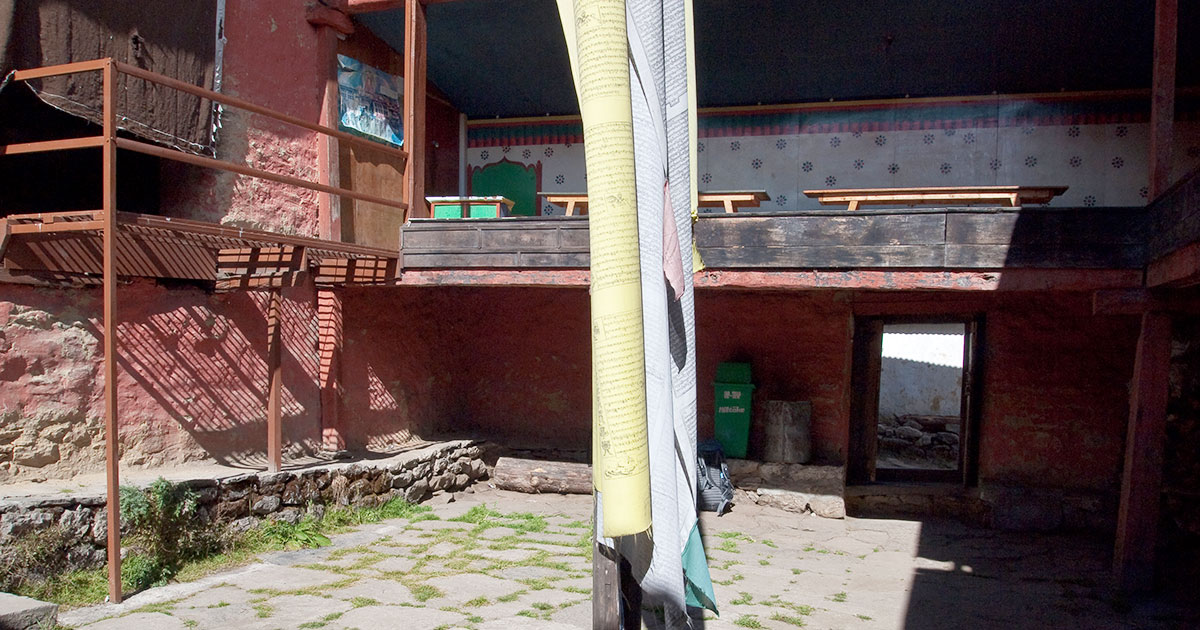
The monastery is surrounded by classic stone houses adorned with fluttering prayer flags, symbolizing peace and spirituality. It is built around a rock where a famous lama once meditated. Solar panels provide sustainable energy, helping the monastery function in the remote Himalayan region. Pangboche Monastery is roughly a day’s trek from Namche Bazaar, making it an accessible spiritual and cultural stop for trekkers heading towards Everest Base Camp. It is also a base camp for climbing Ama Dablam, one of the most striking peaks in the Himalayas.
The monastery offers breathtaking views of Lhotse, Everest, and Ama Dablam, adding to its divine and serene atmosphere.
Neydo Tashi Choling Monastery: Pharping
Hidden amidst Nepal’s breathtaking landscapes, monasteries in Nepal offer a tranquil escape from the chaos of city life. Neydo Tashi Choling Monastery, located in Pharping, 20 km southwest of Kathmandu, offers a serene retreat for meditation and monastic life. Home to nearly 200 monks, it provides insights into Buddhist studies and practices.

The monastery features Nepal’s largest statue of Amitabha Buddha, along with Avalokitesvara and Vajrapani. Established to preserve the Neydo tradition, it emphasizes ritual offerings, prayers, and spiritual development. Despite its proximity to the city, it remains a peaceful sanctuary.
Thrangu Tashi Yangtse Monastery: Namo Buddha
Namo Buddha, situated about 40 km southeast of Kathmandu, is one of Nepal’s most revered Buddhist pilgrimage sites. It is associated with a powerful legend from Buddha’s past life, where Prince Mahasattva encountered a starving tigress and her cubs with his own flesh. Moved by compassion, he selflessly offered his body to save them. This act of ultimate sacrifice is honored by the Namo Buddha Stupa, making the site a symbol of kindness and selflessness.
Perched atop a hill in Namobuddha Municipality, the area offers a peaceful atmosphere, breathtaking Himalayan views, and spiritual significance that inspires faith and renunciation. The main festivals celebrated here are Kartik Purnima and Buddha Jayanti, attracting pilgrims and devotees from across the world.
Thrangu Tashi Yangtse Monastery, also known as Namo Buddha Monastery, is among the Tibetan Buddhist monasteries in Nepal was established by the Very Venerable 9th Khenchen Thrangu Rinpoche. Construction began in 1979, and the monastery was formally completed in December 2008. The monastery consists of three key sections: a monastic college (shedra), a meditation assembly, and an activity section.

The monastery complex features a magnificent six-story temple, adorned with golden arched roofs, and enshrines statues of the Seven Generations of Buddhas and the Thousand Buddhas of the Fortunate Era. It houses over 250 monks, including young monks aged 7–18, who study at Shree Mangal Dvip School during the day and receive both Buddhist and secular education in the Namo Buddha Meditation and Education Centre.
Kyanjin Gompa: The Spiritual Heart of Langtang
Nestled in the Langtang Valley, Kyanjin Gompa is an important monastery that serves as a spiritual retreat amidst stunning mountain landscapes. Kyanjin Gompa is a serene Buddhist monastery located at 3,870 meters (12,697 feet) in the Langtang Valley of Nepal. It is the spiritual and cultural center of the region, surrounded by breathtaking Himalayan peaks, including Langtang Lirung (7,227 m).
The monastery holds deep religious importance for Tibetan Buddhist communities and serves as a meditation and prayer site for monks and pilgrims, which have stood for centuries as a symbol of faith in this remote Himalayan valley.
Kyanjin Gompa is the final stop for most trekkers on the Langtang Valley Trek, offering stunning views, fresh mountain air, and a peaceful retreat from the traditional Tamang culture. Another major attraction of the region is the Yak Cheese Factory, which produces some of Nepal’s finest yak cheese.
Jangchub Choeling Monastery: A Spiritual and Cultural Sanctuary in Pokhara
Jangchub Choeling Monastery, located in Pokhara, is a significant center for Tibetan Buddhist monasteries in Nepal. Established in 1967 under the guidance of Lama Dupsing Rinpoche, it was founded with the blessings of His Holiness the 14th Dalai Lama to preserve Tibetan culture, heritage, and Buddhist teachings.
Looked after by the Tibetan refugees in the 1960s, the monastery follows the Gelugpa tradition, the same school of Buddhism as the Dalai Lama. It has since become a peaceful sanctuary for monastic education, meditation, and spiritual growth, attracting monks, scholars, and visitors from around the world. Nestled amidst the stunning natural beauty of Pokhara, the monastery offers breathtaking views of the Mount Machhapuchre and Annapurna Mountain range, making it an ideal place for a spiritual retreat.
The visitors can experience traditional Buddhist chants and ceremonies performed by the monks. This monastery houses a vast collection of Kagyu texts and Tengyur, which are ancient Buddhist commentaries by Indian masters. Jangchub Choeling is not only a monastery but also an educational hub for Buddhist studies. Young monks receive training in scriptures, philosophy, and meditation, ensuring the preservation of Buddhist teachings for future generations. Recognizing the importance of women in Buddhism, the Jangchub Choeling Nunnery was established in 1987 to provide philosophical education and spiritual training for women of all ages, following the Nalanda tradition of Buddhist learning.
Pyungen Monastery: Manaslu
Pyungen Monastery Pungyen Monastery, or Pung Gyen Gompa, is a hidden treasure in the Manaslu region. It is visited as an important part of the challenging Manaslu Circuit Trek.
This monastery provides panoramic views of the mountains of the Manaslu region. This monastery is situated at the southern slope of Mt. Manaslu at an altitude of 4,700 meters. It is just 14 km from the famous spot Samagaun in Gorkha District.
The Pyungen Monastery is surrounded by rhododendrons, juniper shrubs, and other alpine vegetation. The Pyungen Monastery was built by the Nubri community and people from Tsum Valley to honor Lord Pungyen. Pyungen Monastery being 700 years old gives you a memory to cherish for a long time. This is one of the highlights of the whole Manaslu Circuit Trek, as it comes with a magnificent view of Mt. Manaslu.
Lo Gekar Gompa (Ghar Gumba Monastery): The Oldest Monastery in Upper Mustang
Situated at an altitude of 3,930 m, the Lo Gekar Gompa lies in the Lo Ghekar Damodar Kunda Rural Municipality of Upper Mustang, Kingdom of Lo. The Lo Gekar Monastery, also known as Ghar Gompa, is a sacred Buddhist site built in the 8th century. It is one of the oldest monasteries in the world, predating even the famous Samye Monastery of Tibet. This revered monastery was founded by Guru Rinpoche (Padmasambhava).
The origin of Lo Gekar Monastery is deeply rooted in the legend of Guru Rinpoche’s battle against demons that obstructed Buddhist teachings. According to local folklore, the construction of Samye Monastery in Tibet was repeatedly destroyed by dark forces. So, Guru Rinpoche advised that Lo Gekar Monastery must be built first to subdue these forces by defeating the demons in Mustang. Lo Gekar Monastery is a spiritual and artistic masterpiece that features ancient Frescoes & Murals, beautiful paintings portraying the life of Buddha and Guru Rinpoche.
Kopan Monastery: A Spiritual Haven in Kathmandu
Floating on a hilltop north of Kathmandu, Kopan Monastery is one of the most renowned monasteries in Nepal, attracting visitors seeking spiritual growth, meditation, and Buddhist teachings. Established in the 1970s by Lama Thubten Yeshe and Lama Zopa Rinpoche, this monastery belongs to the Gelupa sect of Tibetan Buddhism and serves as a center for Buddhist studies and retreats. The monastery offers short- and long-term meditation courses, especially to foreigners from the West. The peaceful environment, stunning panoramic views of the Kathmandu Valley, and the daily rituals performed by resident monks create an atmosphere of serenity and introspection.
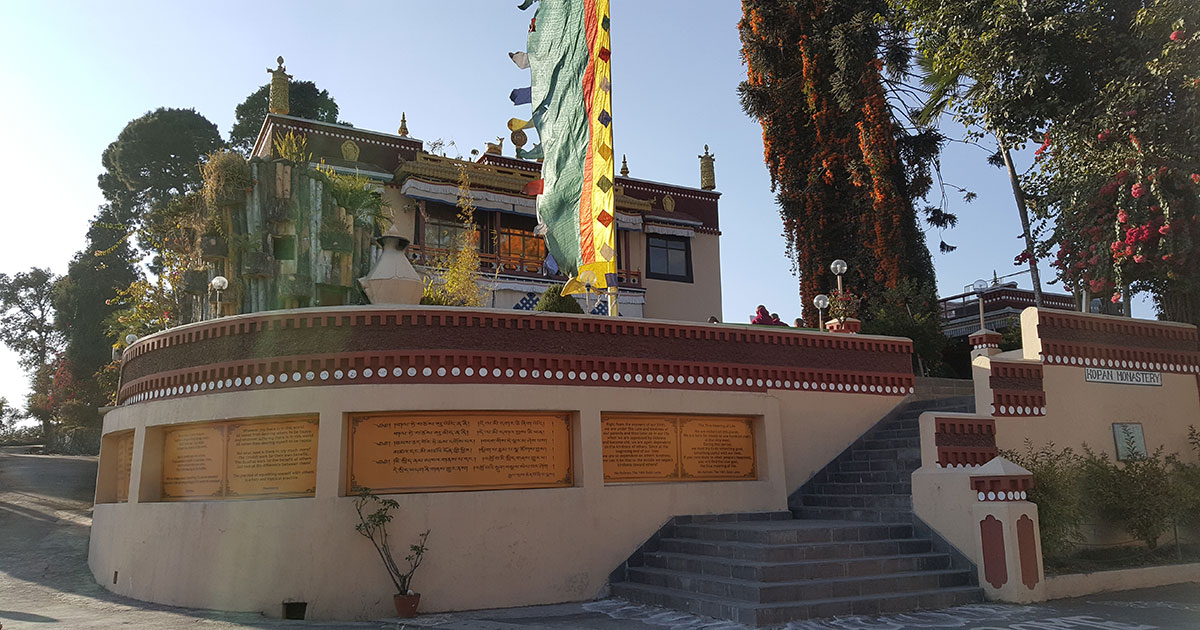
This monastery is one of the popular monasteries in Kathmandu. It is home to 360 monks, lamas, workers, and teachers. Kopan Monastery is associated with the Foundation for the Preservation of the Mahayana Tradition (FPMT). Kopan Monastery is not just a place of learning but a gateway to self-discovery, making it an essential stop for those exploring the spiritual side of monasteries in Nepal.
Shey Gompa
It is an ancient monastery located in the remote Dolpa region of Nepal, at an altitude of around 4,200 meters, within the Shey Phoksundo National Park. It is one of the most sacred monasteries in Nepal, known for its spiritual significance, stunning landscapes, and connection to the Tibetan Buddhist tradition.
The monastery was built in the 11th century and follows the teachings of the Vajrayana Buddhist tradition. It is associated with the famous Crystal Mountain, a revered pilgrimage site. Once held every 12 years, the Shey Festival is very important in this region. Surrounded by the stark yet mesmerizing landscapes of Dolpa, including snow-capped peaks, vast meadows, and high-altitude lakes, it attracts thousands of tourists here. Shey Gompa remains a hidden spiritual treasure of Nepal, drawing trekkers and Buddhist devotees seeking peace, adventure, and cultural immersion. Would you like more details on how to visit Shey Gompa?
Representing the Cultural Heritage
Monasteries in Nepal are more than just architectural wonders. These heritages safeguard centuries-old spiritual teachings and rituals passed down through generations.
From the bustling Kathmandu Valley to the remote Himalayan foothills, these sacred spaces offer tranquility, wisdom, and an opportunity to experience monastic life firsthand. Whether you seek meditation, architectural beauty, or a deeper understanding of Buddhist traditions, Nepal’s monasteries provide a journey of peace and enlightenment.
As you explore these spiritual havens, you’ll discover that each monastery holds a unique story, inviting you to pause, reflect, and connect with something beyond the ordinary.
Related blog posts
Discover a choice of tourist destinations loved by most of our visitors. Whether you're on a jungle safari to spot rare animals or walking through a world heritage site, these well-planned itineraries cover the major highlights of Nepal.

